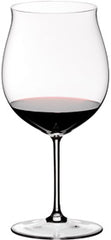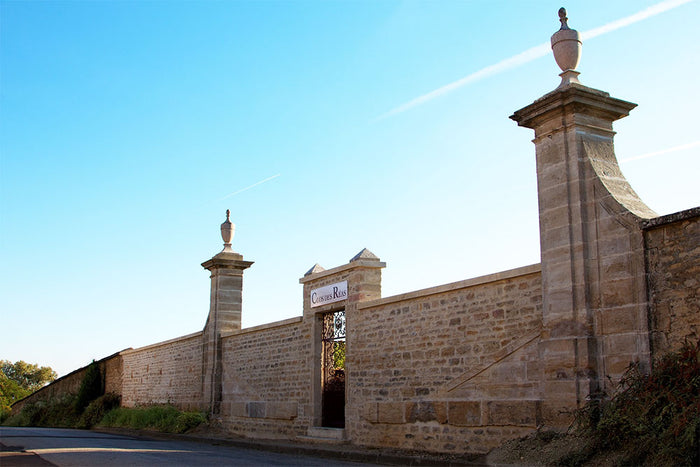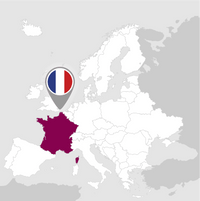Description
Vosne Romanee AOC still red, 13% ABV, produced by Domaine Michel Gros in Burgundy, France. 0.75 L bottle, 2021 vintage. A Pinot Noir that embodies the tradition and excellence of Burgundy, a wine born from a passion for viticulture and the desire to create wines that tell the story of a family that has lovingly cultivated this land for generations. Manual harvest in late September. On the nose, blackberry, spice, and menthol, a bouquet that foreshadows an unforgettable taste. Well-defined flavors of minerals, smoke, and spices, with a juicy finish that lingers well, a wine that captivates with its elegance and persistence.
Awards
Details

Perfume

Color

Taste
Serve at:
16 - 18 °C.
Longevity:
10 - 15 years
Decanting time:
1 hour

Pairings
- Start up year: 1830
- Bottles produced: 150.000
- Hectares: 23
Today, Michel GROS, sixth generation of this dynasty of winemakers, continues and develops the work undertaken by his ancestors, as do his sister (Domaine AG Gros), his brother (Domaine Gros Frère et Soeur) and his cousin (Domaine Anne Gros).
Passionate but also very rigorous, Michel Gros brings constant care to the development of his wines, by mastering all the stages of production, from vine through to bottling.
Modest and unassuming, he expresses himself through his wines: generous, fine, elegant, of reliable and even quality.
Michel GROS and all his team invite you to discover this universe of hard work and exigency, but also of sharing and passion. Read more


| Name | Domaine Michel Gros Vosne Romanee 2021 |
|---|---|
| Type | Red still |
| Denomination | Vosne-Romanèe AOC |
| Vintage | 2021 |
| Size | 0,75 l |
| Alcohol content | 13.0% by volume |
| Grape varieties | 100% Pinot Nero |
| Country | France |
| Region | Burgundy |
| Vendor | Domaine Michel Gros |
| Origin | Vosne Romanée |
| Climate | The area generally enjoys a continental-type climate with hot summers and dry autumns, and also benefits from the effect of dry winds blowing from the north and humid winds from the south. |
| Soil composition | Limestone crust covered with a thin fertile layer. There are also many stones, marl and iron ores, the stones are sometimes over half a kilo in size. The subsoil is rocky and very resistant, the roots nevertheless manage to penetrate deep into the soil, giving the vines surprising longevity. |
| Cultivation system | Guyot |
| Plants per hectare | 8000 |
| Yield per hectare | 30 hectolitres per hectare |
| Harvest | Manual end of September |
| Wine making | Part of the harvest is transferred to the press and undergoes immediate pressing without crushing or destemming. If necessary, the must concetrator is used, temperature-controlled fermentation. |
| Allergens | Contains sulphites |





